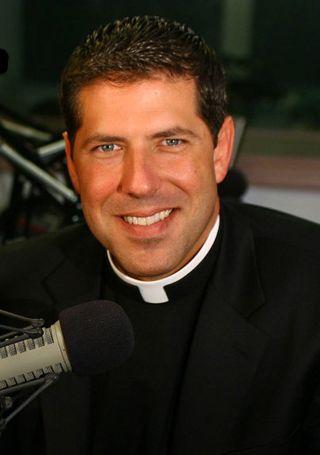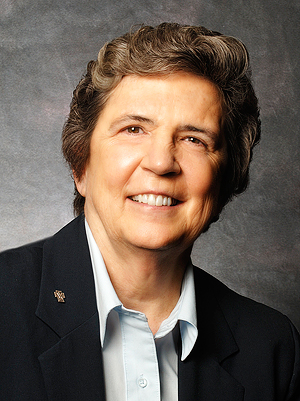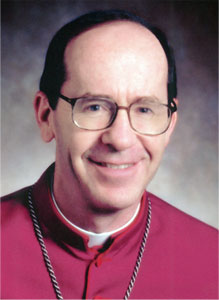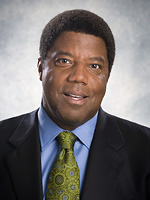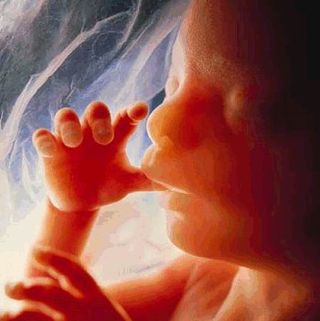In our previous post, we looked at the situation regarding Fr. Albert Cutié, who has written a self-justifying book regarding the scandal he created by having an inappropriate romantic (and presumably sexual) relationship with a woman and, when this relationship was revealed through the press, abandoned his role as a Catholic priest, joined the Episcopalian church, and civilly married the woman, by whom he has subsequently fathered a child.
The previous post looked at the Catholic Church’s general discipline of celibacy (remaining unmarried) for the priests of the Latin Church that exists within it (the celibacy requirement operates differently in many of the Eastern Catholic churches also in union with the pope). In this post we will look at the options that were open to Fr. Cutie at different stages of events and the choices he made.
We will begin with the stage where he first began to be attracted to Ruhama Buni Canellis, the divorced woman with whom he eventually attempted civil marriage. What options did he have at this stage?
1) Just Say No.
This was the only morally legitimate option open to Fr. Cutie upon the onset of attraction to Buni Canellis. We do not know at this point in time (though his forthcoming book may reveal more about the matter) whether she first pursued him or he first pursued her or whether they simultaneously began pursuing each other, but Fr. Cutie had an obligation to neither make amorous advances toward her nor to respond to amorous advances on her part.
As part of the rite of ordination, Fr. Cutie had freely assumed the obligation to remain celibate (unmarried) and thus, via the virtue of chastity (behaving in a sexually appropriate manner) to remain continent (not have sex). This obligation is further canonically specified by Canon 277 §1 of the Code of Canon Law, which states:
Clerics are obliged to observe perfect and perpetual continence for the sake of the kingdom of heaven and therefore are bound to celibacy which is a special gift of God by which sacred ministers can adhere more easily to Christ with an undivided heart and are able to dedicate themselves more freely to the service of God and humanity.
Basic principles of moral theology also require that if one is not a potential, legitimate sexual partner (i.e., spouse) for another person, one also must not engage in behavior oriented toward generating romance, fostering sexual temptation, and raising hopes of a union with that person that one is not free to contract. Consequently, §2 of Canon 277 also specifies:
Clerics are to behave with due prudence towards persons whose company can endanger their obligation to observe continence or give rise to scandal among the faithful.
As was documented in part one of this series, Fr. Cutie was caught on film allowing Buni Canellis to amorously wrap her legs around him and also putting his own hand down Buni Canellis’ swimsuit to fondle her behind. Both of these actions were clear violations of his moral and canonical obligations, as discussed above.
While becoming ordained is not in every respect the same as becoming married, both involve the free assumption of a state of life that involves a sacred commitment regarding sexual matters. In the case of ordination, one makes a sacred commitment that one will not pursue sexual or romantic relationships with anyone, while in the case of matrimony one makes a sacred commitment that one will not pursue sexual or romantic relationships with anyone but one’s spouse. Fr. Cutie’s violation of this sacred commitment is thus analogous to a husband’s pursuit of a sexual or romantic relationship with someone who is not his wife. It counts as the violation of a grave obligation, freely undertaken (canon law is explicit that both ordination and matrimony must be freely chosen commitments), and in this regard it is thus analogous to “cheating” on one’s spouse.
There are also serious moral and canonical questions to be raised regarding the abuse of Fr. Cutie’s spiritual office as a priest in this regard.
In the realm of moral theology, it is gravely sinful for a priest in particular to cooperate with another person in sexual sin, particularly if that person is one of the souls entrusted to his spiritual care, but also in regard to anyone in general. The priest by virtue of his ordination has a sacred position that elevates him above the ordinary faithful in a way paralleling Jesus’ words:
“Whoever causes one of these little ones who believe in me to sin, it would be better for him to have a great millstone hung around his neck and to be drowned in the depths of the sea. Woe to the world because of things that cause sin! Such things must come, but woe to the one through whom they come! (Matthew 18:6-7).
On the canonical side, the Church is quite concerned that its ministers not abuse their sacred office by using it for purposes of seduction, or even for the willing subversion of another’s soul. This is illustrated by the canonical penalties to which a priest is subject if he solicits a sexual sin in conjunction with the sacrament of confession or if he sacramentally absolves one who is his accomplice in sexual sin, both of which are regarded by the Holy See as graviora delicta (Latin, “graver offenses”) that are reserved to the competence of the Congregation of the Doctrine of the Faith in Rome to deal with (cf. this resource).
We do not know at this point, and may never know, whether Fr. Cutie committed either of these offenses specifically, but the two illustrate the Holy See’s concern that priests not abuse their sacred office toward sexual ends.
Given that Fr. Cutie failed to exercise the morally legitimate option to “just say no” to the attraction he was feeling toward Buni Canellis (and please note: feeling attraction is not a sin; the question is how one chooses to deal with it) and dug himself in this deep, what further options were open to him? The morally legitimate one was . . .
2) Repent
Having cooperated with his own fall into sexual sin, as well as that of Buni Canellis, what should Fr. Cutie have done at some point—either when the press publicized his relationship or before or after this point?
An obvious solution would have been to repent—which is what we all need to do when we have fallen into sin, whether sexual or otherwise. Such an action is required by the terms of the gospel:
Jesus went into Galilee, proclaiming the good news [gospel] of God. “The time has come,” he said. “The kingdom of God has come near. Repent and believe the good news!” (Mark 1:14b).
Peter replied, “Repent and be baptized, every one of you, in the name of Jesus Christ for the forgiveness of your sins. And you will receive the gift of the Holy Spirit” (Acts 2:38).
A clear and obvious way in which his act of repentance could have been expressed would be to break off his romantic (and possibly sexual) relationship with Buni Canellis.
Given that the matter had now been made public, there would remain questions regarding his ability to function as a priest. He certainly would have had to accept a lesser role, certainly retiring from the high-profile work he had been doing on radio and television, and quite likely retiring from any exercise of priestly ministry apart from certainly highly specialized cases (e.g., hearing the confession of a person about to die).
Even if the matter had not become public at the time of his repentance, however, there would be various factors that could make the exercise of ministry doubtful—e.g., if Buni Canellis would not accept his decision and threatened to expose him to the press.
We do not know, and likely will never know, whether that would have been the case, but a simple “call off the affair” course of action may have been difficult for any number of reasons, including Cutie’s emotionally attachment to Buni Cannelis and commitments he may have made to her regarding their future. In that case, what options would be open to him? The obvious one would be . . .
3) Pursue Laicization
While the Church recognizes the sacred commitment that is entailed through ordination to the priesthood, it also recognizes that the ordained may be or become unsuitable for the role of priest.
In other words: There can be mistakes. Sometimes a man may be ordained to the priesthood who is not truly suitable for it. Alternately, a man can through his actions make himself unsuitable for priestly ministry. It could be the case that Fr. Cutie was unsuitable from the beginning for priestly ministry or that, though his actions, he had made himself such.
In such cases, the remedy that canon law provides is a procedure known as “laicization” or, more technically “loss of the clerical state.” This does not (automatically) mean that his ordination was invalid, but it does mean that—in the cases of a valid ordination—a laicized priest apart from certain carefully subscribed situations (e.g., hearing the confession of a dying person), is returned to the lay state such that he is prohibited from exercising his faculties as a priest. It also can (but does not always) involve release from the obligation of celibacy. (See this part of the Code for more on the loss of the clerical state in general.)
After reflection on his situation, Fr. Cutie thus could have deemed that he was unsuitable for priestly ministry from the beginning and pursued laicization. He also may have (with a very high degree of plausibility) thought that his actions with regard to Buni Canellis had made him unsuitable for it and pursued laicization on those grounds, including an appeal to the Holy See to allow him to be released from the obligation of celibacy so that he could marry Buni Canellis in view of the emotional/other attachments and obligations he felt existed between them.
Such a path would not have resulted in an instantaneous way of rectifying their situation, or an easy and quick means of resolving the situation (such decisions are left to the discretion of the Holy See), but pursuing this path could represent a fundamental act of repentance and an intention to “make things right.”
Regrettably, Fr. Cutie did not choose even this path. Instead, according to Wikipedia:
By the end of [May, 2009] Cutié announced that he had been in the process of discerning entering The Episcopal Church for the last couple of years, which in turn helped him consolidate marriage and his calling to serve God.
Father Alberto Cutié was received into the Episcopal Church on May 28, 2009, by the Rt. Rev. Leo Frade, the Cuban-born bishop of the Episcopal Diocese of Southeast Florida, and became the administrator and pastoral minister of the Episcopal Church of the Resurrection in Biscayne Park, Miami, where he was licensed as a pastoral assistant. He was subsequently received as an Episcopal priest and instituted as priest-in-charge of the congregation on May 29, 2010.
On June 26, 2009, Cutié and Ruhama Buni Canellis married in a church ceremony at St. Bernard de Clairvaux Church in North Miami Beach. [Episcopalian] Bishop Frade officiated, assisted by the Rt. Rev. Onell Soto (retired Episcopal Bishop of Venezuela) and several other Episcopal clergy.
Cutié is presently serving as the Priest-in-Charge at the Church of the Resurrection in Biscayne Park, Florida. On November 30, 2010, Canellis gave birth to the couple’s first child, daughter Camila Victoria Cutié. Canellis has one other child from a previous marriage.
Cutie thus chose to “jump ship”—to defect from the Catholic Church and enter the Episcopalian Church, where he attempted marriage with Buni Canellis.
Was this a legitimate option for him?
On objective moral and canonical grounds, the answer is no.
While one can never judge the subjective state of a person’s heart, from the perspective of objective moral theology, the answer is no. Objectively speaking, many non-Catholic communities retain elements of the patrimony willed by Christ for his followers, but only the Catholic Church retains these elements in their fullness. While a person in good conscience may find salvation in many faith communities, to deliberately to separate oneself from the fullness of truth and grace that the Catholic Church represents is gravely sinful. As an informed Catholic to whom God would provide sufficient light and grace to retain his faith, Fr. Cutie’s abandonment of the Church represents an objectively grave situation that could only be a non-mortal sin through a lack of due knowledge or a lack of due consent.
Further, from the canonical perspective, Fr. Cutie’s situation does not mean that he is validly married to Buni Canellis. According to Canon 1087:
Those in sacred orders invalidly attempt marriage.
The fact that Fr. Cutie was ordained and has not—so far as we know—been laicized with the ability to contract marriage—means that his attempt to contract marriage in the Episcopalian Church is just that—an attempt, and not a successful one.
Unless there are facts regarding the case that have not yet become public, his present civil marriage to Buni Canellis is invalid and thus in the category that Jesus warned us against, telling us that divorce does not entail an automatic right to marry someone else and can, thus, lead to situations of adultery.
From what is presently publicly known (so far as I can determine), Fr. Cutie is living in an invalid marriage and thus is engaging either in objective fornication or objective adultery (given Buni Canellis’s previous marriage).
Either way, things look bad.
In this part of the series, we have looked at the options available to Fr. Cutie at different steps in his life history. In the next part we will look at the book he has chosen to write, as represented by its press release.
In the meantime, what do you think?

